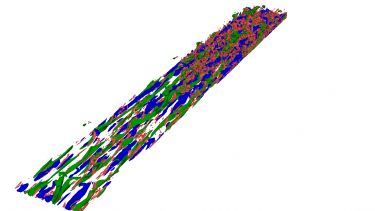Turbulence dynamics in spatially accelerating flows
Funded by EPSRC CASE Studentship, 2021-2023
PhD student: Matthew Falcone. Supervisor: Prof. Shuisheng He.
A radically new theory on transient turbulent channel flow has been proposed by our research group through a series of papers published between 2013 and 2020. In contrast to the conventional view, we have established that such a classical turbulent flow is actually characterised by a much simpler laminar boundary layer followed by transition. In addition, in another paper published in JFM in 2016, we have established a new interpretation of channel flow re-laminarisation, another important flow physics relevant to many engineering applications.
The current PhD project is aimed at extending the above two new channel-flow theories to external boundary layers to tackle the non-equilibrium turbulence phenomena. Such flow physics underpins flow control and drag reduction, an immensely important theme in the energy, transport and aerospace sectors. In particular, we aim to develop a step-change in the understanding of the spatially accelerating/decelerating flows under the influence of favourable/adverse pressure gradients. Initial results have indicated that phenomena observed in transient channel flow is present in spatially accelerating flows.
The study will make use of high performance computing (HPC) and an in-house CFD package CHAPSim based on an advanced methodology: direct numerical simulation (DNS).

